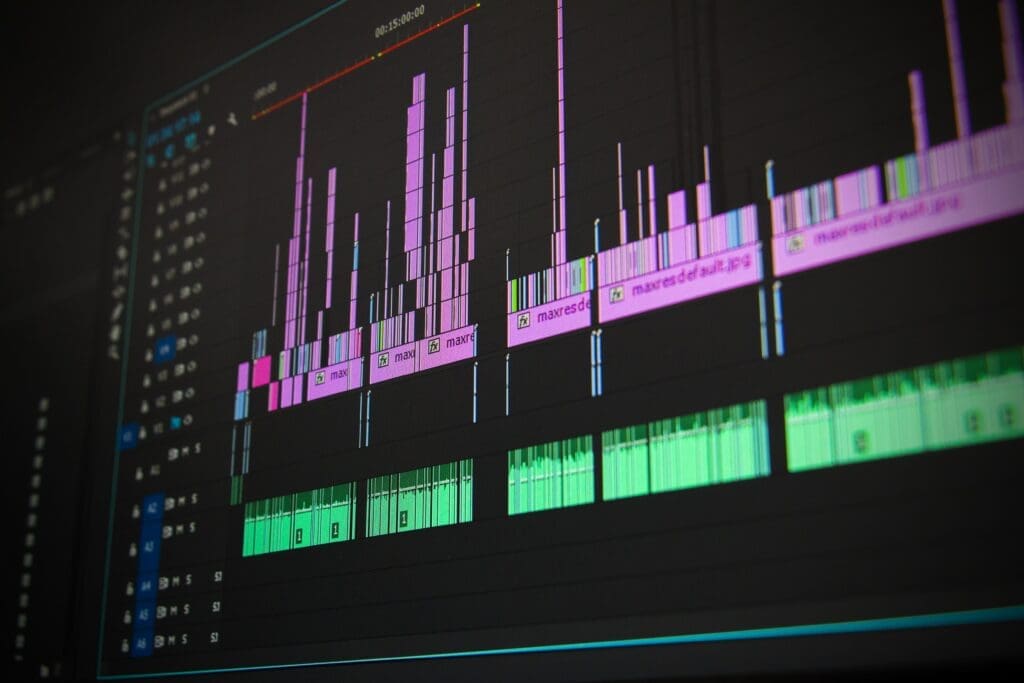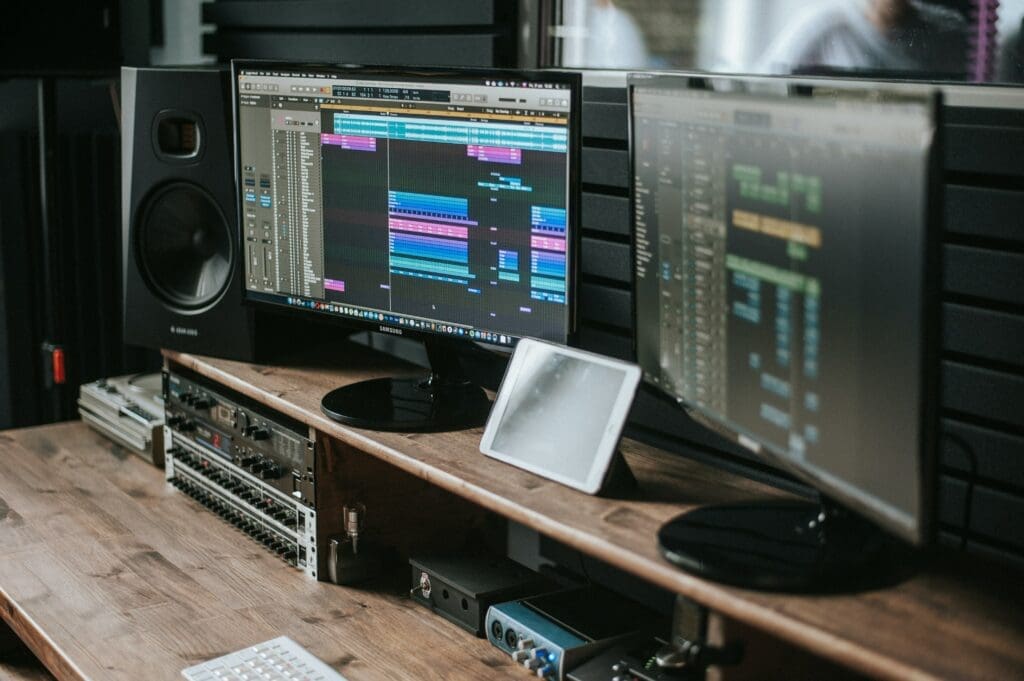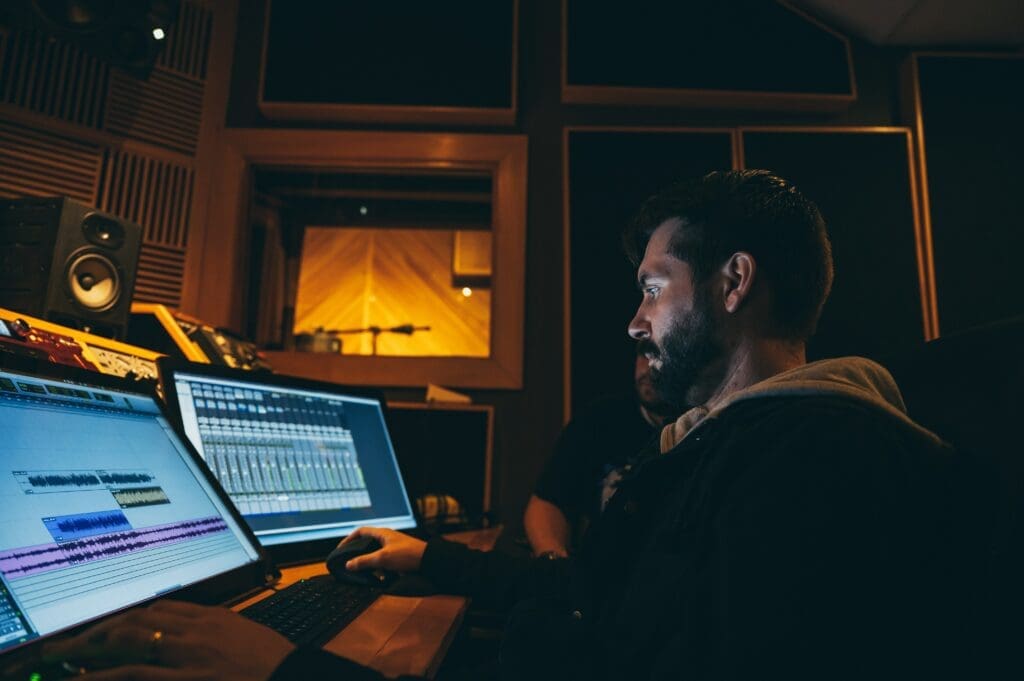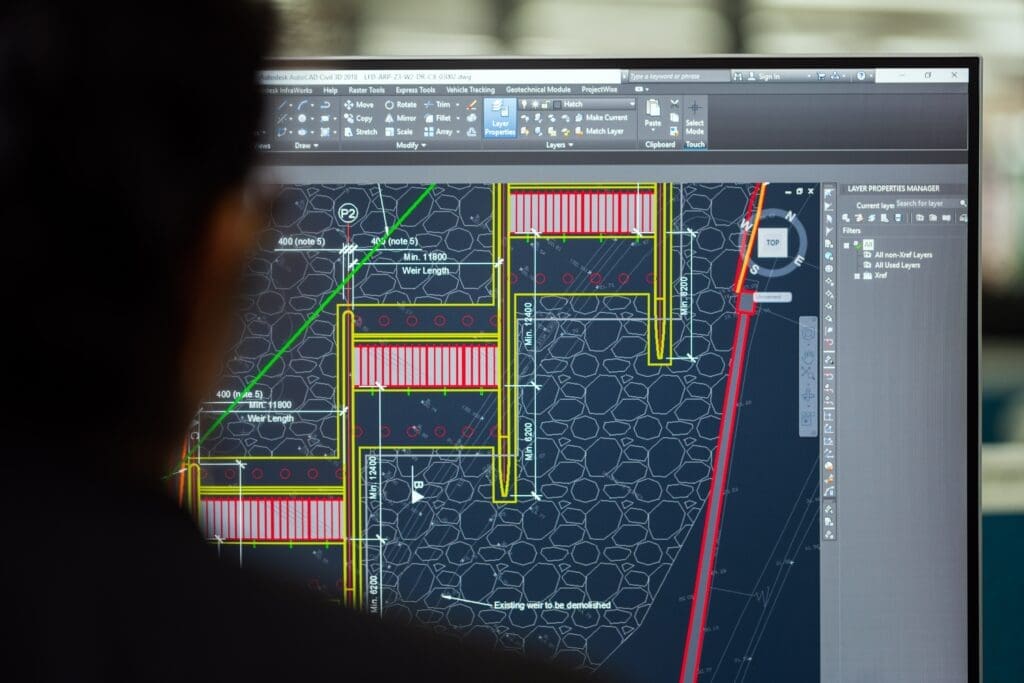Are you looking for a powerful music production tool that will help take your music to the next level? Look no further than Ableton. Ableton and its range of Live Suites are powerful digital audio workstations that allow musicians to create, record, mix, and master their music. With its intuitive design, Ableton makes it easy to create professional-sounding music. Whether you’re a beginner or a professional, Ableton has something for everyone. Let’s dive and explore everything this powerful DAW has to offer music producers of all levels.

History of Ableton
Ableton was founded in Berlin in 1999 by Robert Henke and Gerhard Behles. The company started as a collaboration between musicians and software developers with a focus on creating innovative tools for music production and live performance. The first version of Ableton Live was released in 2001, and since then, the software has gained a reputation as one of the most popular digital audio workstations (DAWs) on the market.
Ableton is a digital audio workstation (DAW) designed for music production and live performance. The software is known for its intuitive user interface and powerful tools for recording, arranging, and mixing music. Ableton is used by musicians, DJs, producers, and sound designers around the world for a wide range of genres, including electronic, hip-hop, rock, and pop. The latest version, Ableton Live 11, includes a range of new features and improvements to enhance the workflow and creative possibilities for users.
While Ableton Live is known for its versatile features and intuitive interface, it is also available in different editions with varying levels of functionality to meet the needs of different users.
Different Editions of Ableton
Several editions of Ableton are available, each with its own set of features and capabilities. Here’s a breakdown of the different Ableton editions:
Ableton Live Intro:
This is the most basic version of Ableton Live, designed for beginners and those on a budget. It includes limited features, such as 16 audio and MIDI tracks, eight scenes, and a selection of built-in instruments and effects. While it may not have all the bells and whistles of the more advanced editions, it’s still a great option for getting started with music production.
Ableton Live Standard:
The Standard edition of Ableton Live includes a wider range of features and tools than the Intro version. With 12 send and return tracks, unlimited audio and MIDI tracks, and a larger selection of instruments and effects, it’s a great option for intermediate users who want more flexibility and creative options in their music-making process.
Ableton Live Suite:
The Suite edition of Ableton Live is the most comprehensive and feature-rich version of the software. It includes everything from the Standard edition, plus additional instruments, effects, and content. Some of the exclusive features in the Suite edition include Max for Live, a powerful tool for creating custom instruments and effects, and a large library of sound packs, samples, and loops.
Ableton Live Lite:
This version of Ableton Live is typically bundled with hardware devices such as audio interfaces, MIDI controllers, and keyboards. It includes a limited set of features, but still offers a great introduction to the software and its capabilities.
Ableton Live for Education:
Ableton offers a special edition of the software designed specifically for educational institutions. This version includes all the features of the Suite edition, as well as a range of additional tools and resources for teaching and learning music production.
In summary, the different editions of Ableton Live offer varying levels of features and capabilities, making it easy for users to choose the version that best suits their needs and budget. Whether you’re a beginner or a professional musician, there’s an Ableton edition that can help you create the music you envision.
In addition to its built-in instruments and effects, Ableton Live also supports third-party plugins and software, which can greatly expand its capabilities and provide access to a wide range of sounds and effects.
Extending Ableton Live’s Capabilities with Third-Party Plugins

Plugins:
There are a wide variety of third-party plugins available for Ableton Live, ranging from virtual instruments and effects to MIDI controllers and utilities. Many of these plugins are designed specifically for Ableton Live and integrate seamlessly with the software, allowing users to expand their creative possibilities and add new sounds and textures to their music. Some popular plugins for Ableton Live include Native Instruments Kontakt, Serum by Xfer Records, and FabFilter Pro-Q3.
Software:
In addition to plugins, there are also third-party software applications that can extend the capabilities of Ableton Live. For example, Max for Live is a programming environment that allows users to create custom plugins and devices using the Max programming language. This can be a powerful tool for creating unique sounds and effects that are tailored to your specific needs and preferences.
Compatibility:
When choosing third-party plugins and software for Ableton Live, it’s important to ensure that they are compatible with your version of the software. Some plugins and software may require a specific edition of Ableton Live, or may not be compatible with certain operating systems or hardware configurations. It’s also important to ensure that the plugins and software you choose are reliable and stable, as unstable or buggy plugins can cause crashes and other issues.
Resources:
There are several resources available for finding and selecting third-party plugins and software for Ableton Live. Many plugin and software developers have websites and forums where users can find information and support, and there are also online communities and marketplaces where users can share and discover new plugins and software. Some popular resources for Ableton Live plugins and software include the Ableton website, KVR Audio, and the Max for Live community.
Budget:
Third-party plugins and software for Ableton Live can range in price from free to hundreds or even thousands of dollars. While some of the more expensive plugins and software may offer advanced features and capabilities, there are also many high-quality free and low-cost options available. It’s important to consider your budget and needs when choosing third-party plugins and software and to do your research to find the best options for your specific situation.
For those who have outgrown the capabilities of their current edition of Ableton Live, there are various upgrade solutions available to provide access to more advanced features and functionality.
Level Up Your Music Production: Upgrading Your Ableton Live Edition

Upgrading to a different edition of Ableton Live can provide musicians and producers with access to additional features and tools that can help them take their music production to the next level. Here are a few best solutions if you are looking for an upgrade.
Upgrading between editions:
Ableton Live comes in three editions – Intro, Standard, and Suite – each with different features and price points. If you already own one edition and want to upgrade to a higher edition, you can do so by purchasing an upgrade from the Ableton website or a licensed reseller. The cost of the upgrade will depend on which edition you are upgrading from and to, and any discounts or promotions that may be available.
Upgrading between versions:
Ableton Live releases new versions periodically, each with new features and improvements. If you already own a previous version of Ableton Live and want to upgrade to the latest version, you can do so by purchasing an upgrade from the Ableton website or a licensed reseller. The cost of the upgrade will depend on which version you are upgrading from and to, and any discounts or promotions that may be available.
Subscription model:
In addition to the traditional upgrade model, Ableton Live also offers a subscription model called Live 11 Suite+. This model includes all the features of Live 11 Suite, as well as additional content and access to new features and updates as they are released. The subscription is paid monthly or annually and includes free upgrades to the latest version of Live for the duration of the subscription.
Crossgrade options:
Ableton Live also offers crossgrade options for users who own other music production software. If you own a qualifying software product, you may be eligible for a discounted upgrade to Ableton Live.
Unleash Your Creativity: Exploring the Dynamic Features of Ableton
Ableton Live is known for its innovative features and user-friendly interface. From its dual view mode to its built-in instruments and effects, Ableton Live provides a unique and versatile platform for music creation and performance. Let’s dive into some of the dynamic features of Ableton Live that make it stand out as a powerful tool for musicians and producers.
Live performance
One of the standout features of Ableton is its ability to be used for live performance. The software is designed to be used on stage, with a layout that allows for easy navigation and control of tracks and loops. The Session View is a unique feature that allows users to trigger clips and loops in real-time, making it easy to improvise and create on-the-fly. Ableton also offers a range of performance-focused tools, such as MIDI mapping and automation, that allow users to customize their setups for live performance.
Session View
The Session View is a unique feature of Ableton that allows users to work with clips and loops in a non-linear way. Users can organize their tracks and clips into scenes, which can then be triggered and arranged on the fly. This makes it easy to experiment with different ideas and create unique arrangements. The Session View is also useful for live performance, as it allows users to trigger clips and loops in real-time.
Arrangement View
The Arrangement View is the traditional linear layout of a DAW, where users can arrange their tracks and clips into a song structure. This view is useful for recording and editing longer-form compositions, such as full songs or soundtracks. The Arrangement View offers a range of tools for editing and manipulating audio and MIDI data, including time-stretching, warping, and quantization.
Instruments and effects
Ableton comes with a range of built-in instruments and effects, including synths, samplers, drum machines, and more. These instruments and effects can be used to create a wide range of sounds and styles, from classic analogue synth sounds to modern electronic beats. Ableton also supports third-party plugins, allowing users to expand their sonic palette even further.
Max for Live
Max for Live is a feature of Ableton that allows users to create their own devices and instruments using the Max programming language. This opens up a world of possibilities for customization and experimentation, as users can create unique tools that are tailored to their specific needs.
User Interface
Ableton’s user interface is designed to be intuitive and easy to use. The software has a clean and modern look, with a layout that is optimized for workflow and efficiency. Users can customize the interface to suit their needs, with the ability to resize and reposition windows, as well as save and recall custom layouts.
Ableton Live’s workflow is one of its standout features, providing a flexible and intuitive platform for music creation and performance. By taking advantage of the unique capabilities and features of Ableton Live’s workflow, users can streamline their creative process, reduce inefficiencies, and bring their musical ideas to life more efficiently and effectively.
Streamline Your Music Production: Mastering the Workflow of Ableton Live

Creating a project
Creating a new project in Ableton is a simple process. Users can start by selecting a template or creating a blank project from scratch. Once the project is created, users can start adding tracks and clips, importing audio and MIDI files, and customizing the settings to suit their needs.
Recording and editing audio and MIDIMixing and mastering
Ableton makes it easy to record and edit audio and MIDI data. Users can record audio directly into the software using a microphone or instrument, or import audio files from their computer. MIDI data can be recorded using a MIDI controller or drawn in using the piano roll editor. Once the data is recorded or imported, users can edit and manipulate it using a range of tools, including time-stretching, warping, and quantization.
Navigating the interface
Ableton’s interface is designed to be easy to navigate. Users can switch between the Session View and Arrangement View, resize and reposition windows, and access a range of tools and settings from the menu bar. The software also offers a range of keyboard shortcuts and hotkeys to speed up common tasks, such as selecting and editing clips.
Once the tracks and clips are arranged and edited, users can move on to the mixing and mastering stage. Ableton offers a range of tools for mixing, including EQ, compression, and reverb, as well as a powerful automation system for fine-tuning levels and effects. Once the mix is complete, users can export the final product in a range of formats, including WAV, AIFF, and MP3.
Overall, Ableton’s workflow is designed to be intuitive and efficient, with a range of tools and features that allow users to create and manipulate music quickly and easily. The software’s non-linear layout and performance-focused tools make it particularly well-suited for live performance and improvisation.
Seamless Integration: Unlocking the Compatibility of Ableton Live
Operating system compatibility
Ableton is available for both Mac and Windows operating systems. The software is regularly updated to ensure compatibility with the latest versions of each operating system, and users can check the Ableton website for specific system requirements.
Plug-in compatibility
Ableton supports a wide range of third-party plugins, including virtual instruments and effects. The software uses the VST and Audio Units plugin formats, which are widely supported by other music software and plugins. Ableton also offers a range of plugins, including Max for Live, which allows users to create their custom instruments and effects.
File format compatibility
Ableton supports a range of audio and MIDI file formats, including WAV, AIFF, and MP3 for audio, and MIDI, REX, and Ableton’s own ALS format for MIDI. The software also allows users to export their projects in a range of formats, including audio and MIDI files, as well as Ableton’s own Live Set format, which preserves all of the project’s settings and effects.
Hardware compatibility
Ableton is compatible with a wide range of hardware, including MIDI controllers, audio interfaces, and more. The software is designed to work seamlessly with Ableton Push, a dedicated hardware controller that allows users to create and manipulate clips and loops in real-time. Ableton also offers a range of control scripts for popular MIDI controllers, allowing users to customize their setups and workflows.
Overall, Ableton’s compatibility is a key strength of the software, allowing users to integrate it with a wide range of hardware and software tools. This flexibility makes it a popular choice for music producers and performers of all levels.
Breaking Down the Beat: Pros and Cons of Ableton Live for Music Production

Known for its innovative features and intuitive interface, Ableton Live provides a powerful platform for creating and performing music. However, as with any software, there are both pros and cons to using Ableton Live for music production. Let’s break down the beat and explore the advantages and disadvantages of using Ableton Live.
Pros
- Intuitive workflow – Ableton’s non-linear layout and performance-focused tools make it easy for users to create and manipulate music quickly and efficiently.
- Versatility – Ableton is suitable for a wide range of musical styles and genres, and its flexibility makes it a popular choice for both producers and performers.
- Live performance features – Ableton’s session view and performance-oriented tools make it particularly well-suited for live performance and improvisation.
- Third-party plugins – Ableton supports a wide range of third-party plugins, allowing users to expand the software’s capabilities and customize their setups.
- Regular updates – Ableton is regularly updated with new features and bug fixes, ensuring that users always have access to the latest tools and technologies.
Cons
- Learning curve – the non-traditional layout and performance-focused tools can take some time to get used to, particularly for users who are more accustomed to traditional DAWs.
- While Ableton Live is highly regarded in the music production industry, there are some cons to using this software that is worth considering. In the following sections, we will explore these cons in more detail, as well as discuss ways to mitigate or work around these potential drawbacks.
- Limited editing capabilities – While it offers a range of tools for recording and editing audio and MIDI data, some users may find that the software’s editing capabilities are somewhat limited compared to other DAWs.
- Expensive – Ableton is a premium software, and its pricing can be a barrier to entry for some users, particularly those who are just starting.
- CPU-intensive – Ableton’s real-time processing capabilities can put a strain on some computers, particularly older or less powerful models.
Overall, Ableton is a powerful and versatile music production software with many strengths and a few weaknesses. Its intuitive workflow, live performance features, and support for third-party plugins make it a popular choice among producers and performers, while its learning curve and limited editing capabilities may be drawbacks for some users. Ultimately, the decision to use Ableton will depend on each user’s individual needs and preferences.
DAW Wars: Comparing Ableton Live to Other Digital Audio Workstations
Ableton vs. Logic Pro X
Logic Pro X is a popular digital audio workstation developed by Apple. Like Ableton, Logic Pro X is suitable for a wide range of musical styles and genres and offers a range of features for recording, editing, and mixing audio and MIDI data. However, there are some key differences between the two software programs.
One of the main differences between Ableton and Logic Pro X is their respective workflows. Ableton’s non-linear layout and performance-oriented tools make it particularly well-suited for live performance and improvisation, while Logic Pro X’s traditional timeline layout and comprehensive editing tools make it a popular choice for music production and post-production work.
Another difference between the two programs is their respective third-party plugin ecosystems. Ableton supports a wide range of third-party plugins, while Logic Pro X offers a range of native plugins that are well-integrated with the software.
Ultimately, the choice between Ableton and Logic Pro X will depend on each user’s individual needs and preferences. Users who prioritize live performance and improvisation may find Ableton to be the better choice, while users who prioritize traditional music production and editing may prefer Logic Pro X.
Ableton vs. Pro Tools
Pro Tools is a professional digital audio workstation developed by Avid. Pro Tools offers a range of features for recording, editing, and mixing audio and MIDI data. However, there are some key differences between the two software programs.
One of the main differences between Ableton and Pro Tools is their respective market positioning. Pro Tools is primarily designed for professional audio engineers and post-production specialists, while Ableton is designed for music producers and performers.
Another difference between the two programs is their respective workflows. Ableton’s non-linear layout and performance-oriented tools make it particularly well-suited for live performance and improvisation, while Pro Tools’ traditional timeline layout and comprehensive editing tools make it a popular choice for professional audio engineers.
Ultimately, the choice between Ableton and Pro Tools will depend on each user’s individual needs and preferences. Users who prioritize live performance and improvisation may find Ableton to be the better choice, while users who prioritize professional audio engineering and post-production may prefer Pro Tools.
Navigating the Pricing and Plans of Ableton Live

Before committing to music production software, it’s essential to consider the price and plans that fit your budget and needs. Ableton offers several pricing options for its software, depending on the user’s needs and budget.
Ableton Live 11 Standard
Ableton Live 11 Standard is the entry-level version of the software, and it offers a range of features for recording, editing, and mixing audio and MIDI data. The Standard version includes 17 instruments, 35 audio effects, and 8 MIDI effects, as well as support for up to 16 tracks and 8 scenes in the session view.
The Standard version of Ableton Live 11 is priced at $449 for a perpetual license, which means that users can continue to use the software indefinitely without any additional payments. Alternatively, users can purchase a subscription to Ableton Live 11 Standard for $7.99 per month or $79 per year.
Ableton Live 11 Suite
Ableton Live 11 Suite is the premium version of the software, and it includes all of the features of the Standard version, as well as a range of additional instruments and effects. The Suite version includes 74 instruments, 41 audio effects, and 15 MIDI effects, as well as support for unlimited tracks and scenes in the session view.
The Suite version of Ableton Live 11 is priced at $749 for a perpetual license. Alternatively, users can purchase a subscription to Ableton Live 11 Suite for $12.99 per month or $129 per year.
Ableton Live 11 Intro
Ableton Live 11 Intro is a stripped-down version of the software that is designed for beginners and users with limited budgets. The Intro version includes 4 instruments, 21 audio effects, and 8 MIDI effects, as well as support for up to 16 tracks and 8 scenes in the session view.
The Intro version of Ableton Live 11 is priced at $99 for a perpetual license. Alternatively, users can purchase a subscription to Ableton Live 11 Intro for $4.99 per month or $49 per year.
In addition to these pricing options, Ableton also offers educational discounts for students and teachers, as well as a free trial period for users who want to test the software before making a purchase. Overall, Ableton’s pricing options are flexible and cater to users with a wide range of needs and budgets.
The Final Note: Wrapping Up Our Journey with Ableton Live
Ableton is a powerful digital audio workstation that offers a range of features for recording, editing, and mixing audio and MIDI data for the discerning producer. Its non-linear layout and performance-oriented tools make it particularly well-suited for live performance and improvisation, and its compatibility with a range of hardware and software tools makes it a versatile and flexible option for music producers and performers.
While Ableton may not be the best choice for every user, its unique workflow and performance-oriented tools make it a popular choice for musicians and producers in a variety of genres and styles. Its pricing options are flexible and cater to users with a wide range of needs and budgets, and its support for third-party plugins and hardware tools makes it a versatile option for users who want to customize their workflow.
Overall, Ableton is a powerful and user-friendly digital audio workstation that is well-suited for musicians, producers, and performers at all skill levels. Whether you are a beginner who is just starting or a professional who needs a powerful tool for music production and performance, Ableton offers a range of features and options that can help you achieve your creative goals.










